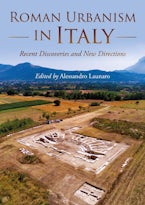Water Displays in Domestic Spaces across the Late Roman West
Cultivating Living Buildings
Imprint: Oxbow Books
320 Pages, 100 color and B/W illustrations
-
£40.00
£32.00
- Hardcover
- 9798888571125
- November 2024












